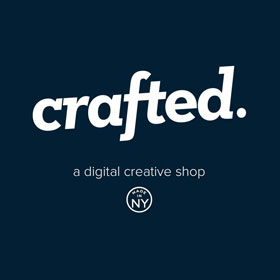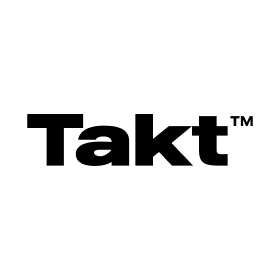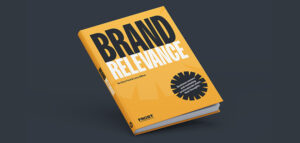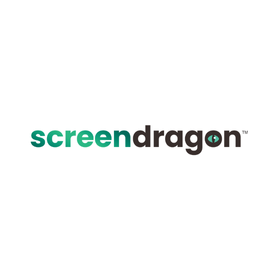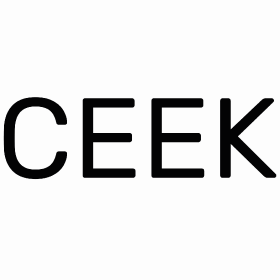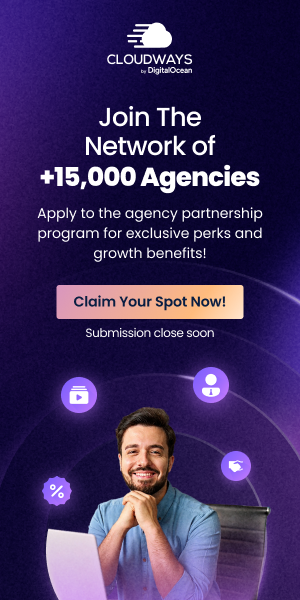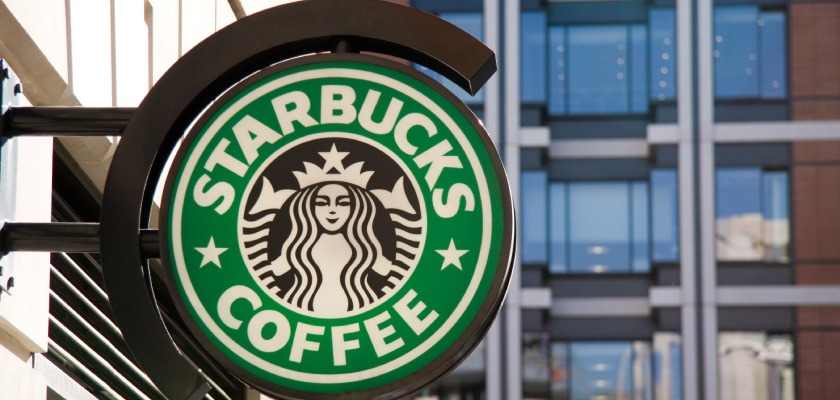
Starbucks’ Digital Marketing Strategy: How to Brew Success
Known for its iconic green logo and the promise of a remarkable coffee experience, no doubt that Starbucks is a global phenomenon. Behind the aroma of freshly brewed coffee and the cozy ambiance of its coffee shops, there is a compelling and effective digital marketing strategy that has played a crucial role in its worldwide success.
Join us as we explore Starbucks’ digital marketing strategy and discover how this brand has harnessed the power of the digital age to create a worldwide sensation!
What’s Inside?
Starbucks Marketing Goals & Objectives
Understanding Starbucks’ marketing goals and objectives is crucial to grasping how the brand has maintained its position as a global leader in the coffee industry.
At the core of its marketing efforts lies a commitment to growth, customer satisfaction, and continuous innovation.
Starbucks’ Target Audience

Starbucks has perfected the art of targeting a specific, yet expansive, audience that includes young adults, urban professionals, and tech-savvy consumers. With its ever-evolving locations, digital initiatives, and deep connection to its community, Starbucks continues to cater to a dynamic, affluent demographic.
HubSpot breaks down Starbucks’ target audience as follows:
- Target Demographic: 25–40 years old
- Store Aesthetic: Modern, hip design
- Tech-Savvy Consumers: 60% of U.S. sales from Rewards members
- Mobile Ordering: The primary method for customers
- Urban Focus: High-traffic, city-centered locations
- Working Professionals: Targeted with drive-thru services and convenience
Through its thoughtful targeting of tech-savvy, professional, and predominantly urban consumers, Starbucks has positioned itself as not just a coffee shop but a lifestyle brand. By catering to this audience’s unique needs—convenience, quality, and a digital-first approach—Starbucks continues to thrive as one of the most successful brands in the world.
You Can Brew Success Just Like Starbucks
We’ve hand-picked two agencies seasoned in beverage and lifestyle marketing; their storytelling and data-driven tactics brew lasting customer loyalty and growth.

Crowd
We admired Crowd’s loyalty app launch for Costa Coffee UAE, which achieved a 151% increase in downloads, a 36% reduction in cost-per-download, and 4.5 M impressions.
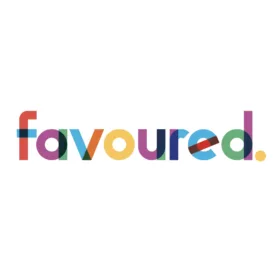
Favoured
We suggest Favoured for crafting meaningful content and rigorous ROI measurement for beverage companies that want quality results.
Starbucks’ SWOT Analysis
Starbucks stands out for its strong brand and high-quality products, yet it faces various opportunities and challenges in its operations.
- High-Quality Products: Starbucks is known for its premium coffee and exceptional customer experience, which strengthens its global appeal.
- Customer Experience: The company excels in delivering an engaging and consistent customer experience both in-store and online.
- Effective Use of Social Media: Starbucks effectively uses social media platforms to connect with customers, build brand loyalty, and promote new products.
- High Pricing: Starbucks faces criticism for its premium pricing, which may limit its accessibility to price-sensitive customers.
- Rapid Expansion: The company’s aggressive expansion strategy can strain its financial resources and supply chain, leading to potential challenges in maintaining consistent quality and service.
- Expansion of Online Sales and Mobile Payments: Starbucks has a significant opportunity to further develop its online sales channels and mobile payment systems, enhancing convenience for customers and boosting revenue
- Leveraging China’s Economic Growth: The growing population and economic development in China present a huge growth opportunity for Starbucks to expand its footprint and capture a larger share of the market.
Threats
- Competition from Local Brands: Local coffee and beverage brands are rising in popularity, creating competitive pressure for Starbucks, particularly in emerging markets..
- Low Coffee Acceptance in Some Markets: Despite its global success, Starbucks faces challenges in markets where coffee culture is not as widespread, which may hinder growth potential.
Brand Positioning and Unique Selling Points
At the heart of Starbucks’ digital marketing strategy is its impeccable brand positioning and unique selling points. Starbucks has masterfully established itself as a premium coffee brand, renowned for its commitment to quality. This is evident in every cup of coffee they serve, which is sourced from some of the best coffee-producing regions in the world. It’s this dedication to quality that forms the foundation of Starbucks’ marketing strategy.
Moreover, Starbucks has skillfully crafted an environment that extends beyond just a coffee shop – they’ve created a third-place experience. In a world where digital connections often overshadow physical ones, Starbucks offers a place for people to connect, work, or simply savor their coffee. This approach aligns with the modern need for spaces that bridge the gap between home and work, and it’s a strategy that speaks to the digital-savvy, mobile workforce.
Frequent LA-Starbucks visitors, John Frink, Joel H. Cohen, and Rob LaZebnik have come together to create “1st & Main,” a series of animated shorts highlighting warm and familiar everyday moments that happen in Starbucks stores across the country. The seven-episode series is set in Starbucks and stars a cast of animated animal characters. The LA store, its customers, and baristas are the inspiration for Starbucks’ first-ever animated series.
LaZebnik tells about the creative process:
As much as we are supposed to be working, we are even better at procrastinating. Looking around, you can’t help but see the vibe in there – the partners (employees), the regular customers, the flow of morning traffic. We thought we could bring that to life in a really fun way.
Cohen also comments:
Starbucks talks about the ‘third place’ between work and home. That’s ultimately the theme of the series: every person at every table has a story. At our table, we are the three weird guys watching the other tables.
The series’ cast of characters will seem familiar to those who’ve spent time in Starbucks. There’s Julie, “1st & Main”’s store manager and matriarch, who, fittingly, is a bear. Chet, a beagle, is a contractor who seems to know everyone in his store community and has a kind word for everyone, and Diego, a barista cat with a man-bun, takes pride in creating the perfect beverage for his customers.
Starbucks’ Customer-Centric Approach
Starbucks’ continuous commitment to its customers is another aspect of its digital marketing strategy. It goes beyond merely offering a product; Starbucks strives to create a personalized and enriching experience for each patron. The Starbucks Rewards program is a prime example of this customer-centric approach. Through the mobile app, customers can place orders, earn rewards, and enjoy a seamless, convenient experience. Starbucks not only recognizes its loyal customers but also provides them with incentives to return.
The customer-centricity is further enhanced through feedback mechanisms, where Starbucks actively seeks input from its customers to refine its offerings and improve the overall experience. This real-time feedback loop is a testament to the brand’s dedication to understanding and serving its audience. That being said, understanding how a brand like Starbucks uses digital marketing can provide invaluable guidance to marketing agencies, especially food and beverage marketing agencies, helping them devise strategies that convert customers effectively and stand out in an increasingly competitive landscape.
Inclusivity and Sustainability
In a world increasingly concerned with social and environmental issues, Starbucks’ digital marketing strategy has also embraced inclusivity and sustainability. The brand has made concerted efforts to create an inclusive atmosphere, ensuring everyone feels welcome. Their commitment to hiring military veterans, supporting refugees, and providing opportunities to individuals with disabilities demonstrates their dedication to inclusivity.

Additionally, Starbucks has taken substantial steps toward sustainability. From ethically sourced coffee beans to reducing its environmental footprint, the brand showcases its commitment to a better world. These efforts not only resonate with customers but also serve as compelling marketing narratives.
The brand has also adopted the use of lids for their drinks as a way to reduce plastic straw usage. Additionally, for customers who prefer using straws, Starbucks offers paper straws. Even though this action may seem small, considering the size of Starbucks and the millions of coffees they sell each day, it can have a more significant impact than we might initially think.
Starbucks’ Marketing Strategies Explained
In this section, we’ll dive into the key marketing strategies that have fueled Starbucks’ rise to global dominance.
1.Starbucks’ Social Media Strategy
Starbucks’ success in the digital realm is not solely attributed to its premium coffee but also to its active presence on major social media platforms. The brand has recognized the power of connecting with its audience where they spend a significant portion of their time: on social media.
The brand’s approach isn’t just about posting content; it’s about building a community. Starbucks understands that a vibrant online community can drive loyalty and advocacy. Their content isn’t just about coffee; it’s about the lifestyle and the experience that comes with it. Whether it’s sharing heartwarming stories or posting artistic photos of their beverages, Starbucks creates content that resonates with their audience.
Engaging Content and Storytelling
Starbucks’ social media strategy is fueled by the power of storytelling. They don’t merely showcase their products; they craft narratives around them. Every post, every image, and every video tells a story – whether it’s about the journey of a coffee bean from farm to cup or a heartwarming encounter at a Starbucks store. This storytelling approach not only makes their content more engaging but also strengthens their brand identity.
The power of storytelling lies in its ability to connect on a deeper level with the audience. By sharing stories, Starbucks invites customers to be a part of the experience, reinforcing the emotional connection to the brand.
User-Generated Content and Community Building
Starbucks’ social media strategy extends beyond their own posts. They actively encourage user-generated content (UGC). The famous Starbucks cup photos shared by customers, often accompanied by the hashtag #Starbucks, are a prime example of this. Customers become brand advocates, willingly sharing their experiences with their network and the wider Starbucks community. In fact, in 2014, the brand created one of the most effective UGC campaigns, the White Cup contest. During this event, customers were invited to employ their artistic talents in decorating the iconic white Starbucks cup. These personalized cup designs were then shared on Instagram and Twitter, using the hashtag #WhiteCupContest. This allowed participants to engage with the Starbucks community while celebrating their creativity.
One year later, @Starbucks White Cup Contest winner grateful to inspire others http://t.co/JOqVsmB7BK pic.twitter.com/bzuQRU3RMH
— Starbucks News (@StarbucksNews) August 7, 2015
This UGC strategy not only provides Starbucks with an abundance of authentic content but also builds a strong community. Customers who see their content featured by Starbucks feel recognized and valued, fostering a sense of belonging and loyalty.
Real-Time Interactions and Customer Feedback
One of the remarkable aspects of Starbucks’ social media strategy is its commitment to real-time interactions. They actively respond to customer inquiries, comments, and feedback on their social media channels. This responsiveness is not just a customer service tactic; it’s a demonstration of genuine engagement.
By actively listening to and engaging with customers on social media, Starbucks gathers valuable insights that can inform marketing decisions and improve overall customer experience. This real-time feedback loop keeps customers engaged and demonstrates Starbucks’ commitment to meeting their needs and expectations.
2.Starbucks’ Advertising Strategy
Online and Offline Advertising Channels
Starbucks’ advertising strategy is a testament to the art of blending online and offline channels effectively. While many businesses may focus predominantly on digital advertising in the digital age, Starbucks recognizes the importance of a multifaceted approach. They maintain a strong presence both online and offline, ensuring that their marketing messages reach their audience wherever they are.
Offline, you’ll find Starbucks advertisements in various forms, from billboards and print ads to in-store promotions and partnerships with other businesses. Their iconic logo is a prominent fixture in urban landscapes, creating a sense of familiarity and trust. Online, they leverage digital advertising through channels like social media, search engine marketing, and display ads. This hybrid approach allows Starbucks to reach a broad spectrum of consumers.
Consistency in Branding and Messaging
A fundamental aspect of Starbucks’ advertising strategy is the unwavering consistency in branding and messaging. The iconic green logo, the soothing color palette, and the promise of a premium coffee experience are instantly recognizable worldwide. Starbucks understands the importance of maintaining brand consistency in the digital age, where attention spans are fleeting, and first impressions matter.
By presenting a consistent image and message across all advertising channels, Starbucks reinforces its brand identity, making it easier for customers to recognize and trust the brand. This approach not only builds brand loyalty but also attracts new customers who are drawn to the brand’s reputation for quality and excellence.
Personalized and Data-Driven Advertising
Starbucks leverages data to create personalized marketing campaigns. Their Starbucks Rewards program and mobile app provide valuable insights into customer preferences and behaviors. By analyzing this data, Starbucks tailors promotions and offers to individual customers, increasing the likelihood of conversion and customer retention.
With 90 million transactions a week in 25,000 stores worldwide the coffee giant is in many ways on the cutting edge of using big data and artificial intelligence to help direct marketing, sales, and business decisions.
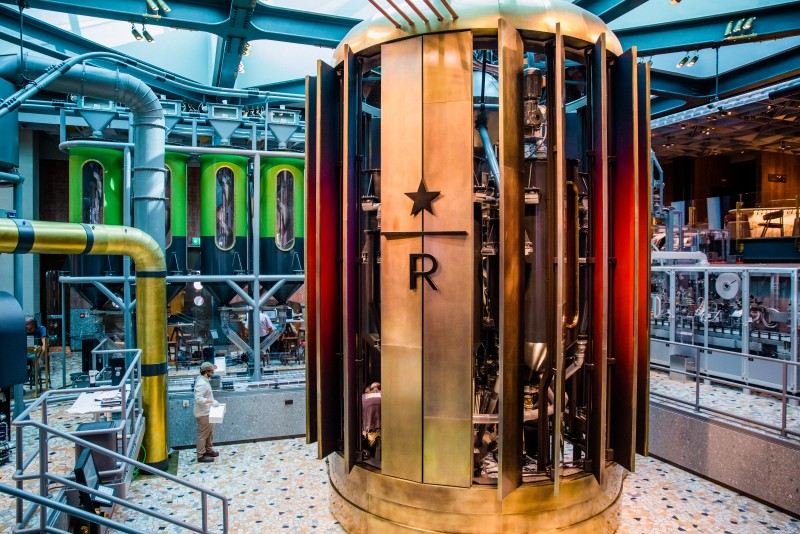
With the rewards program and mobile app, they dramatically increased the data they collected and could use to get to know their customers and extract info about purchasing habits. The Starbucks mobile app users create an overwhelming amount of data about their product consuming habits and that can be overlaid on other data including weather, holidays, and special promotions.
Just some of the ways that Starbucks uses the data it collects are the Flywheel Program and Virtual Barista, they can successfully practice targeted and personalized marketing.
Promotions, Partnerships, and Collaborations
Starbucks keeps its advertising fresh and engaging by introducing promotions, partnerships, and collaborations. Seasonal promotions like the Pumpkin Spice Latte or holiday-themed offerings generate anticipation and excitement among customers. These limited-time promotions create a sense of urgency, driving sales and foot traffic to Starbucks stores. Here’s an example of their spring merchandise for 2025, available for a limited time and at select locations:
And, of course, the latest relaunch of Starbucks’ spring drinks:
Additionally, Starbucks has successfully collaborated with other brands, and famous artists like Ed Sheeran and Oprah, extending their reach and appeal. For instance, their partnership with Delta Airlines allows customers to earn more miles for every $1 spent on Starbucks. Collaborations like these create cross-promotional opportunities, attracting a broader audience.
Members of @Starbucks Rewards and @Delta SkyMiles can now link accounts to earn even more rewards like miles and Stars. Read more here: https://t.co/SstUOyWLIa
— Starbucks News (@StarbucksNews) October 12, 2022
Starbucks is taking another step toward evolving the digital experience for customers in China by launching voice ordering and delivery capabilities within Alibaba’s smart speaker.
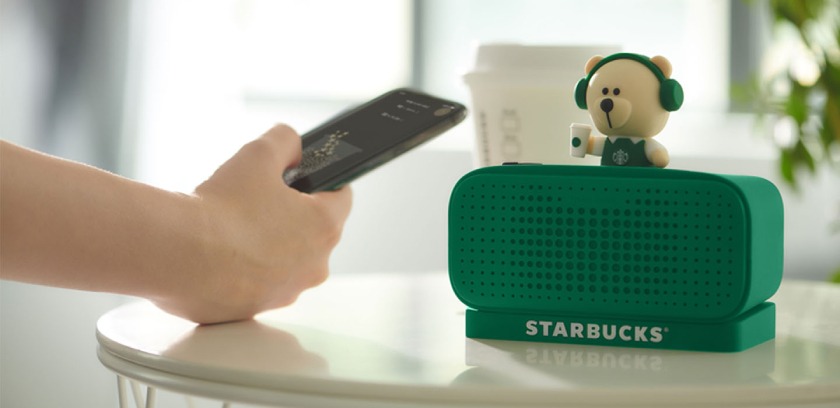
Visitors can order their beverages and food simply by using their voice for delivery within 30 minutes. Leveraging Alibaba’s on-demand food delivery platform, Eleme, the voice ordering capabilities for Starbucks further extend the customer experience within the digital ecosystem.
Miffy Chen, General Manager at Alibaba commented:
We are thrilled to provide our cutting-edge Artificial Intelligence technology through Tmall Genie to serve Starbucks digitally-savvy customers in China. Earlier this year, we launched food order and delivery service through Ele.me in response to our users’ needs for on-demand local services. We’re excited to introduce an even more diverse and enriched experience on our platform through Starbucks voice ordering and provide a direct benefit to Chinese consumers within their daily routine.
3.Starbucks’ Campaign Strategy
Seasonal and Thematic Campaigns
One of the standout aspects of Starbucks’ digital marketing strategy is its skillful execution of seasonal and thematic campaigns. Starbucks has mastered the art of creating anticipation and excitement around limited-time offerings. Whether it’s the return of the Pumpkin Spice Latte or the unveiling of holiday-themed cups, Starbucks has a knack for capturing the essence of the season in their campaigns. While it introduces its seasonal offerings, the brand also markets its brand-new flavors.
These campaigns serve several purposes. Firstly, they build a strong sense of anticipation among customers, who eagerly await the seasonal flavors and experiences. For instance, I personally wait for fall to come so that I can have a sip of my favorite Starbucks flavor; Toffee Nut Latte.
Secondly, these campaigns tap into the nostalgia and traditions associated with each season, creating a sense of comfort and familiarity. Starbucks has effectively turned these seasonal campaigns into cultural moments, for sure.
Cause–Related Marketing and Social Responsibility
Starbucks’ digital marketing strategy also emphasizes cause-related marketing and social responsibility. The brand recognizes the power of aligning with social issues and taking a stance on matters of importance. Starbucks campaigns often champion social causes, from initiatives to support veterans to campaigns promoting equality, diversity and mental health.
Mental health needs are diverse, and in fact, the mental health crisis is incredibly complex, with 1 in 5 adults experiencing some form of mental illness each year. Partners and customers experience it firsthand every day – in their personal lives, in their stores, and in the neighborhoods that Starbucks serves.

At an event Starbucks held in 2019 for store managers and field leaders from Canada and the US, the company laid out its commitment by declaring that at Starbucks, mental health matters and partners can subscribe to the app Headspace to support daily meditation and mindfulness.
As the company’s Chief Partner Officer, Lucy Helm commented,
“Together, we’re on a mission to take a stand, help break the stigma, and get even more partners and their family the support they need.”
By engaging in cause-related marketing, Starbucks goes beyond promoting products – they promote values and ideals. This approach not only resonates with socially conscious consumers but also positions Starbucks as a brand that cares about more than just profits. It fosters a deeper emotional connection with the audience.
4.Starbucks’ Loyalty Program Strategy
Loyalty programs have become a cornerstone of modern marketing strategies, offering businesses a powerful tool to foster customer retention and drive repeat purchases. By incentivizing customers to engage more frequently, these programs not only enhance brand loyalty but also provide valuable data insights that can be leveraged for personalized marketing efforts.
Starbucks has masterfully utilized its loyalty program, Starbucks Rewards, to achieve these objectives. With over 34 million active members, the program accounts for approximately 60% of the company’s revenue, highlighting its significant impact on sales.
Members earn Stars with every purchase, which can be redeemed for free drinks, food, or merchandise, creating a compelling reason for customers to return. The integration of mobile ordering and payment through the Starbucks app has further streamlined the customer experience, making it more convenient and efficient.
Beyond its marketing prowess, Starbucks’ loyalty program exhibits characteristics akin to banking operations. Customers preload funds onto their Starbucks accounts, effectively providing the company with interest-free capital. As of 2016, Starbucks held over $1.2 billion in customer funds, surpassing some smaller banks in cash holdings. This capital is not subject to traditional banking regulations, allowing Starbucks to utilize it for operational purposes without the constraints faced by financial institutions.
Additionally, the concept of “breakage”—funds that remain unused in customer accounts—further enhances Starbucks’ financial position. The company reports millions in breakage income annually, contributing to its profitability. This model not only strengthens customer loyalty but also provides Starbucks with a unique financial advantage, blurring the lines between retail and banking sectors.
Conclusion
Digital marketing is a dynamic landscape. Therefore Starbucks serves as a prime example of enduring success and innovation. Its commitment to quality, personalization, and social responsibility underpins a brand that has seamlessly blended online and offline strategies to sell not just coffee but an emotional experience. As the digital world evolves, Starbucks continues to adapt and lead.
Starbucks reminds us that success in the digital age lies in fostering an emotional connection with the audience, a blend of art and science, passion and precision, and an unwavering commitment to exceeding customer expectations.


